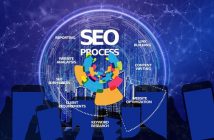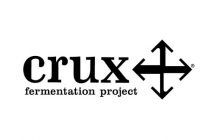Understanding how small business loans work in Canada can better help you and your business get the approval needed for growth and success.
In all things business, knowledge is power!
Small Business Loans Overview
It takes money to make money but how does a business get the money it needs to begin with?
Small business loans are a great way to start or grow a business. Getting outside capital means that the business owner can focus more on driving the business and satisfying customers than constantly being on the hunt for new money.
However, not all businesses (even established businesses) will get approved for a small business loan.
But, if you understand how the process works, what lenders want and how to position your business for an approval – then the sky’s the limit.
Keep in mind that small business loans or any business capital are tools to be used to provide more benefit to the business than the loan or capital costs the business. Anything else is just a waste of time and resources. Thus, if you are seeking a business to save your business and not grow your business – you might have more problems then just accessing capital – problems that additional business money will not solve.
Types Of Small Business Loans:
There are several types of business loans – all designed for specific purposes.
While a business may not care so much as long as it gets the capital it needs, banks and lenders are quite particular when it comes to the type of loan. The main reason is that if the lender can match the loan to the business’s need, it reduces the risk on both parties. Further, a business wants a business loan to work for them and if a business gets the wrong type of loan – it can put undue strain on the business’s cash flow or ability to actually grow (the true purpose of getting a loan).
- Term Loans: Term loans are considered your standard business loan. They have fixed terms (say 36 months) and begin with a high balance (usually the loan amount) and come down with each payments as part of each payment goes to both the principal and interest.
- Revolving Loans: Revolving loans are usually business lines of credit. They work in a similar manner as a credit card. You start with a credit limit but a zero balance. You then draw on the credit limit – increasing your balance. From this point, if you have yet to max out your credit limit, you can draw on the line again as well as make a payment and pay the balance down. These loan types are considered short-term business loans and thus, have very short terms – usually under 12 months.
- Asset Based Loans: Typically used for large purchases of physical assets like business equipment or commercial real estate. These types of loans tend to have longer terms (matched to the useful life of the assets – like 5 years for equipment or 20 years for real estate) and lower interest (as the interest can be spread across many more payments). The idea here is to make the loan payments affordable for the business – longer terms and lower interest lower loan payments.
Matching your business needs with the right loan can go a long ways in ensuring your business’s success. The idea behind a business loan is to leverage income (usually increased income from using the loan to grow the business) to make the loan payments – thus, letting the business loan pay for itself.
However, if your business has an opportunity to expand the business over the next three years, a revolving loan might not be the best option as the income to repay the loan will be spread out over 36 months but with a revolving loan, the payments (or complete payoff) will happen in a very short time frame.
Structure of Loans:
Small business loans are usually term facilities; meaning that the original balance is paid down on a fixed schedule of both principle reduction and interest charges.
This includes your standard business loan and all assets based loans.
Most all loans are tied to the need of the business. If the business is buying inventory for the up coming summer season, the loan’s term (usually a revolving loan in this case) will be set to those three summer months. This gives the business time to purchase the inventory, sell it to its customers, collect payment and pay off the loan.
Term loans on the other hand are tied to the useful life of the asset. The idea is that while the asset has a useful life, it can still generate revenue to cover the loan payments. Example: If a business buys a piece of equipment to double its production and that equipment has a useful life of 5 years, then the loan’s term should be set to those same five years.
All loans can be set up as interest only payments, monthly payments, quarterly payments, or balloon payments.
Interest & Fees:
When financial institutions lend money, they take risks in doing so. Further, lenders put out a lot of effort in providing loans; from underwriting, auditing, and servicing of the facility to securing the capital from investors or depositors. For these efforts and its risk, banks and other financial institutions will charge both fees and interest when making business loans.
Fees MAY come in the form of:
- Application fee
- Origination fee
- Monitoring fee
- Audit fee
- Appraisal fee (unless loan is unsecured)
- Monthly service fee
- Annual fee
In any case, the financial institution is attempting to ensure that it covers its cost in providing these loans as well as make a tidy profit for its shareholders, owners, or investors – similar to what your business does when it sets its prices.
Interest can either be fixed or variable; but, are mostly variable. Interest rates are typically tied to some monetary measure like the LIBOR or Prime Rate (stated in percentages) – these are measures that financial institutions use to determine what their costs of funds are (i.e. their costs in getting the capital to loan to your business).
Financial institutions usually add additional percentages points to the base measure. This additional increase in rate is usually tied to the riskiness of the borrower. Example: Prime + 2%. If the Prime Rate is 4% – the total interest rate is 6% (4% + 2%).
Expect variable rates to be lower at origination but have the possibility to increase substantially if market conditions warrant. Fixed rates, as the name suggests, are fixed over the life of the loan and usually start out much higher than variable rates but do not carry the same market risks. Example: Prime + 4% – fixed as opposed to Prime + 2% – variable.
Purpose:
Most financial institutions, especially banks, are very picky about the use of funds of their loans. Lenders want to protect themselves, their depositors and/or investors. To do so, they may restrict how the proceeds of a business loan are used.
Obliviously, lenders do not want to lend to businesses that conduct illegal operations. Should the business get caught doing something illegal, the financial institution stands a very good chance of never seeing its money again.
In conjunction, lenders do not like to lend to borrowers who have shown in the past that they are not willing to repay borrowed funds. This is usually determined by examining a borrower’s credit history.
Moreover, banks, during their underwriting, will determine, in their minds, if you or your business has the wherewithal to make the minimum monthly payments. If you or your business does not have the cash flow to make monthly payments, how can the bank or lender be assured that they will get their money back?
Repayment:
Lenders typically like to see three (3) sources of repayment. The first and most important is cash flow – the profits your business generates in operation of the business. However, if the loan is tied to a financial assets like inventory or accounts receivables, the lender wants to see those assets converted to actual cash (cash flow into the business) as soon as possible.
Second, is usually based on the collateral securing the loan. Lenders look for assets that have resell values that meet or exceed the amount of the loan. Should the loan not have specific collateral (like an equipment loan would) or is under collateralized, the lender will require a blanket liens against all the business’ assets.
As unsecured business loans don’t have collateral as a second form of repayment, banks and other lenders will compensate for this with higher interest rates and fees.
As a third source, lenders typically turn to personal guarantees. This shows the lender that the business owner(s) is willing to risk their own personal assets to grow the business. So, be willing to provide your potential lender with at least three sources of repayment – including a personal guarantee.
In regards to cash flow, it is not sufficient to have just enough cash flow to cover the payments of a business loan – both principal and interest – but to have a little bit more (as much as half more) – just in case your business has a slow period, it can still meet the minimum payment.
Secure vs. Unsecure:
Unsecured Business Loans are usually monetary loans that are not secured by any business or personal asset. Here, the lender is counting on your business to be able to generate future income to make the monthly payments on the loan.
As a side note, the most common type of unsecured business loans are business credit cards.
Secured Business Loans, on the other hand, are loans in which the borrower pledges some business asset acceptable to the lender as collateral for the loan. Collateral for business loans come in all forms and shapes from stocks, bonds, and other financial assets to inventory, property and plant and equipment and machinery. However, for the most part, loans are secured by the assets purchased by the capital from the loan.
The lender (bank, financial institution, or non-bank entity) is given security – a lien on the asset – until the loan is paid off in full. If the business defaults on the loan, the financial institution would have the legal right to repossess the asset(s) and sell it to recover any outstanding loan balance and other charges.





